The Mission
Toadegreegenerallyunapproachedbytheleadingschoolsinotherprofessions,theUniversityofPennsylvania'sSchoolofVeterinaryMedicineleads andmoldstheeducationandpracticeofveterinarymedicineinthenation andtheworld.


Our school has pioneered in the development of veterinary clinical specialties and clinical investigation,in comparative medicine, and in the development of such new fields as aquatic animal medicine,and animal/human interactions. We have successfully integrated scholarship and research into all aspects of veterinary medical education and we supply disproportionately high numbers of faculty nationwide to veterinary schools and other medical institutions. We have made continuous and significant contributions to basic and clinical research and have trained large numbers of students and faculty as biomedical research scientists. We have led the way in curriculum development,as exemplified most recently by the school's unique core/elective curriculum, and we were the first to create programs in continuing education for American practitioners. We have maintained a professional and loyal relationship with our alumni and have established strong bonds with important agricultural associations,humane societies,dog breeders,horse breeders,and other organizations and individuals concerned with animals and animal welfare. We have established a Center on the Interactions of Animals and Society in an effort to bring to the veterinary profession a heightened awareness of the social,behavioral,and cultural interactions of animals and human beings.

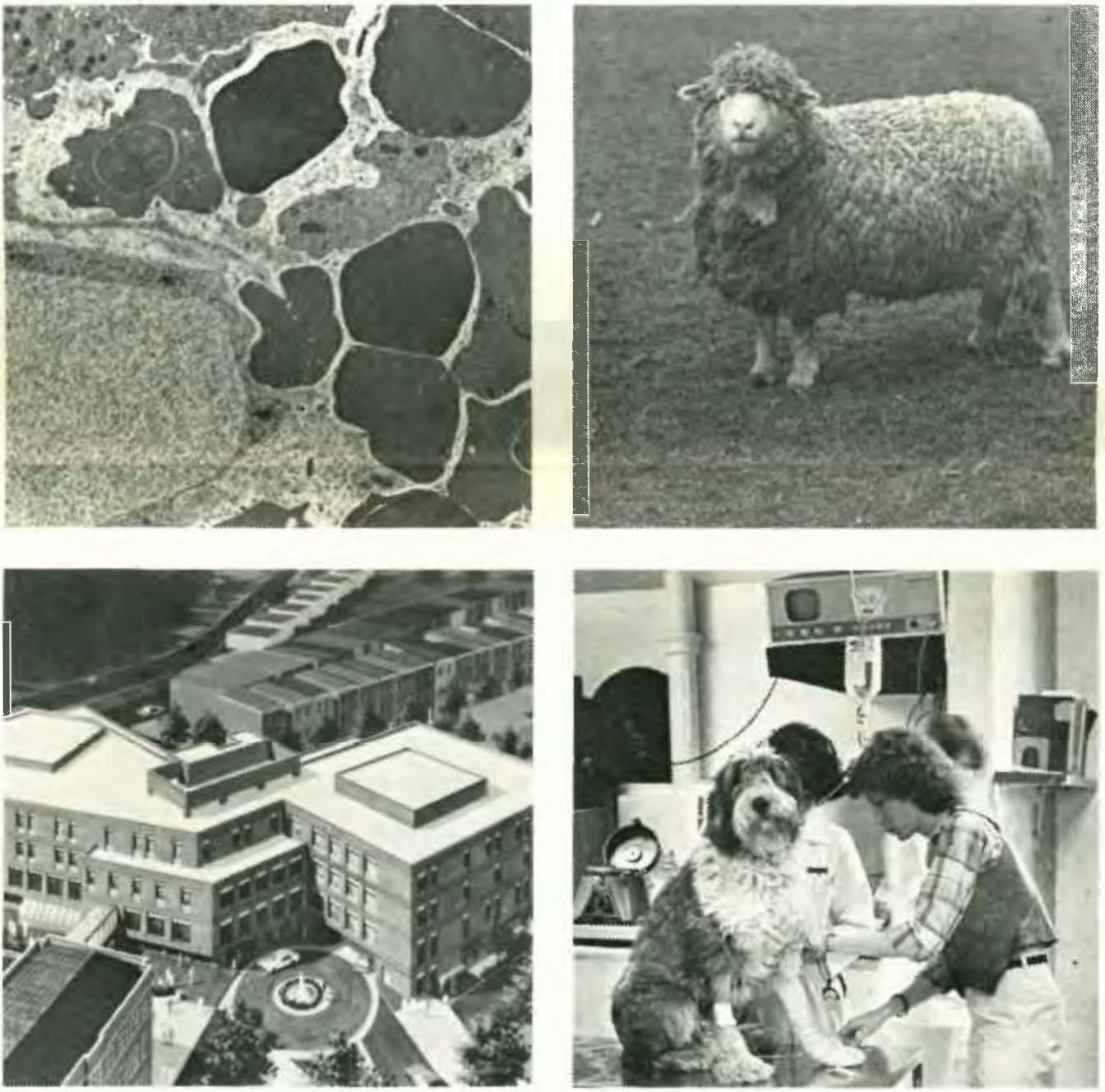

Alone,among schools of veterinary medicine,we possess both a rural and an urban campus and,owing to our biological breadth and our medical disciplines,we enjoy a special role in the University,interacting in significant ways with the Faculty of Arts and Sciences and the Facuhies of Medicine and Dental Medicine.And,by steadfast attention to the traditional concerns of veterinary medicine,we provide,on a regional basis,the most advanced level of veterinary care and services.
As we face the future,we see extraordinary opportunities for growth and for a greater role in the mainstream of American life. Working with the livestock and poultry industries, we must strive to increase the numbers and improve the health and productivity of food animals to help meet the nutritional requirements of the six billion or more people who will inhabit the earth in the year 2000. And,as society has become increasingly sensitive and demanding about the quality of our
(Continued on page 10)

NewsmagazineoftheSchool ofVeterinaryMedicine
er
Admissions
Bellwether is published quarterly by the School of Veterinary Medicine at the University of Pennsylvania, in cooperation with the University of Pennsylvania Publications Office.
Editors:
Dr. John E. Martin
Stephanye Williams
Writers:
Patricia Manning
Helma Weeks
Bill Wine
Dr. Josephine Deubler
(Animal Crackers)
Designer: Two Twelve

Associates
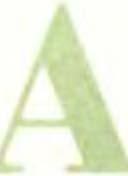
Photographers: Diane Feltoon
Lynne Klunder Kressly
New Bolton liaison: Catherine Larmore
Advertising Sales: Stephanye Williams
20335/10M/5-82
This editorial by Dean Robert R. Marshak, D.V.M. is a revision of an article which originally appeared in Health Affairs, Summer,1974.

We'd like to hear your praise, criticisms, or comments. Please address your correspondence to: Dr. John Martin. Editor, University of Pennsylvania, School of Veterinary Medicine, 3800 Spruce Street, Philadelphia, PA 19104, or Stephanye Williams, Editor, University of Pennsylvania Publications Office, 410 Logan Hall, Philadelphia, PA 19104.
None of these articles are to be reproduced in any form without the permission of the editors of Bellwether.
© 1982

by the Trustees of the University of Pennsylvania.
wrathful horseowner calls to protest the school's failure to admit a student who is (,4terribly good with animals." The horseowner lets me know that he is also a successful business executive (machine tools or some such) and that our admissions policy is fundamentally unsound; we are not identifying the "best practitioner material." I leaf through the young man's record and explain that he is a marginal student and that hundreds of applicants have stronger credentials. After a while the horseowner/business executive becomes abusive and threatens political reprisals against the school. I am tempted to ask whether he would like my advice on how to manufacture a better lathe, but in the end I hold my tongue.
A veterinarian visits my office to discuss his son's rejection. The son has a disastrous academic record, but the father insists that he would make a fine practitioner. He has been helping in his father's successful practice and already knows more about "practical veterinary medicine" than most of our graduates. Besides, we seem to be accepting too many women, "most of whom will end up as housewives."
A despairing mother telephones from New England. Her son has been rejected a third time and she is recently widowed. Didn't we take that into consideration? I explain, based on his record, that her son probably could not handle the rigorous veterinary medical curriculum and wouldn't it be wise for him to consider another career. This advice is hard to accept; veterinary medicine has always been his goal. I want to invite her son for counseling, but she hangs up abruptly.
A Washington politician speaks in husky, confidential tones about the son of a friend who was denied admission last year. Will he make it this time? The politician has never before asked the University for anything. He assures me of his continuing support whatever the outcome, hut this young man's admission is important to him. Will I review the record and call him back?
A tall man, older looking than most applicants, visits my office without an appointment. He is one of those not invited for interview, an unfavorable sign. He wishes to present himself on the slim chance that his appearance, maturity, and seriousness of purpose will outweigh an undistinguished academic record. He has traveled all the way from Florida, hoping against hope. I call for his record and see that a rejection letter is already in the mail. We talk for an hour discussing his life. He is indeed older than most applicants and has worked hard at many things, always involving animals. He cannot remember a time when he didn't yearn to study veterinary medicine. Though I do not encourage him about next year, he vows not to give up. He will take some rigorous science courses in graduate school at a southern university. Or would it he more advantageous to move north and become a Pennsylvania resident? When he leaves I am filled with sadness, as though I had lived through a tragic episode in the life of my own son.
A mother, father, and daughter-handsome, softspoken, gracious folkdiscuss with me the young woman's future direction. She has fine credentials-excellent grades from a small prestigious college (mostly As; a few Bs) and summer experience in a veterinary practice and biological research laboratory. Unfortunately, she resides in West Virginia and there are relatively few places for non-Pennsylvania, non-contract state residents. After explaining the realities, I encourage her to try again. I agree with her parents that the profession will be poorer if she doesn't make it. They comprehend the odds and don't complain, but I sense a deep hurt in what must seem to them gross injustice. They are very proud of the daughter's achievements and this is America.
Bellwether
Bellwether
2
Inevitably, the selection of a new class by the Admissions Committee signals the beginning of a long series of interviews with unsuccessful applicants and their families. It is a wrenching experience. The majority of applicants have never seriously considered other careers and, after arduous years of preparation, the reality is too painful to bear. In the case of alumni parents there is often a feeling akin to betrayal. There is hardly a time that calls for greater sensitivity and compassion.
More than anything else, unsuccessful applicants desire reassurance that all is not lost and most seek counseling on how to improve their chances in the next round of admissions. Generally, they fall into one of four categories:
e Students with poor or mediocre academic records, with or without real knowledge of veterinary medicine as a career;
• Students with acceptable though not outstanding academic credentials;
• Students with outstanding records, with or without real knowledge of veterinary medicine as a career.
e Special students, e.g. Ph.D.s who wish to change careers.
Except for those in the first category, most are advised either to reapply the following year or to reapply only after significantly strengthening their academic records and/or improving their knowledge of the profession. Special care is taken not to engender excessive optimism. Unfortunately applicants are seldom eligible to apply to more than one, or at the most, two other veterinary schools; medical applicants on the other hand usually apply to a dozen schools, or more.
Understandably, some persons question the fairness of the admissions process; others, pointing to the school's reputation as a distinguished research institution suspect that there may be bias against those applicants who would become practitioners. The latter question can be disposed of by consulting the record, i.e. seventy-five to eighty·five percent of our graduates enter private practice, distributing themselves into small animal, large animal, mixed, and specialty practice categories in about the same proportions as graduates of other schools.

The fairness question is obviously more difficult to document. However, my personal observations have convinced me that our procedures are thorough, objective and fair. The Admissions Committee, chaired by Associate Dean Joseph Skelley, is composed of eight elected members of the faculty, four veterinary student representatives and an alumni member who is appointed by me every two years. On matters of policy and procedures all members have a vote; on the final decision about a candidate, only the faculty and the alumni member vote. Dr. Victor Menghetti (V'45) is now serving as the alumni member.
The Committee begins its monumental task each year with a highly accurate computerized data base which ranks students according to their grade point averages; the printout also provides Graduate Record Examination scores, information on colleges attended, etc. On the basis of these data as well as letters of recommendation, the Committee invites several hundred applicants for interviews. Soon after a candidate is interviewed by two Committee members his/her credentials are discussed by the entire Committee. This is followed by a vote to admit, to reject, or to place on ''hold" for further consideration. Altogether, it is a task of staggering proportions and it leaves Committee members emotionally drained and physically exhausted.
If there is a better, fairer, or happier way to select a class we are unaware of it.
Spring 1982 3
"Sleep well and sweet dreams" is the blessing of many parents when children scamper off to bed. Sleeping well,however,is no simple matter for many individuals and the dream phase can be troublesome,even fatal,to some people.
Sleeping and dreaming have been viewed, simply,as a stage differing in behavior and brainwave pattern from wakefulness. In the early fifties,through EEG measurements, researchers discovered that normal sleep is a cycle comprised of several distinct, repeated phases,one of which shows brainwave patterns similar to those during wakefulness. In this phase of the sleep cycle, which lasts about ten minutes and is called rapid eye movement (REM), people and other mammmals have rapid eye movements and minor twitching of toes and fingers. The head and the neck, however, remain still and the muscles in that area are in an atonic state. It has now been recognized that abnormalities in the sleep cycle and brainwave patterns may indicate medical and neurological disorders.
It is on this aspect of sleep that researchers at the School of Veterinary Medicine are concentrating their efforts to find clues through the use of animal models to the causes of sleep disorders and the underlying medical and neurological problems. Joan C. Hendricks, V.M.D., Ph.D.,resident in medicine, is studying sleep disorders,and Adrian Morrison, D.V.M., Ph.D., professor of anatomy,is studying the physiology of sleep.
Dr. Hendricks, who has pursued this area of study since 1974, treats dogs,cats,and some other animals suffering from sleep disorders at the hospital. She explained that this is the only facility where such treatment for animals is available. Most of her patients are referred by the neurology department at the Veterinary School. In her research she also works closely with the sleep clinic and the cardio-vascularpulmonary group at the Hospital of the University of Pennsylvania(HUP). Medicine is beginning to recognize the implications of sleep disorders, and Dr. Hendricks views this study as an important diagnostic tool. "We should be paying attention to what is going on during sleep. Abnormalities may manifest themselves first in sleep while they may still be subclinical in waking."
As an example, Dr. Hendricks cited sleep apnea(hypersomnia with periodic apnea, HPA),a disorder found primarily in middleaged men. These individuals breathe normally during waking,but in slow-wave sleep they begin to have pauses in breathing. In REM sleep they cease to breathe for long periods, sometimes up to eighty-percent of the REM phase. The oxygen level in their blood sinks to very low levels, and the body attempts to compensate by increasing circulation and diaphragmatic efforts. Often these people begin to snort and gasp, some sit up, others get up in an attempt to catch their breath. Snoring and low blood oxygen levels during sleep are symptoms common to all HPA sufferers. They are
A Diagnostic Tool

not aware of their breathing problems during the night and complain only of daytime sleepiness.
While most people experience brief periods of apnea during sleep,it does not damage their systems as it does in HPA sufferers. Here the pulmonary and circulatory systems are stressed and get progressively weaker. Some of these individuals may eventually die of heart failure. Some HPA sufferers have obstructions in their upper airways which interfere with breathing while lying down.Others may be overweight,although many afflicted individuals are normal in weight or only slightly overweight. In others,the upper airway becomes obstructed during REM sleep, making it impossible to breathe properly and causing apnea and snorting. It is this phenomenen, which has unknown causes,that Dr. Hendricks
infant death syndrome which is fatal to many human babies.
To study animals in their sleep, the veterinary school has a special soundproof cage which is lighted,heated, and ventilated. The animal is observed through a one-way mirror, and the cage is spacious enough to house a large dog. Dr. Hendricks said that dogs and cats adjust quickly to the cage. "We play with them, then we put food and water in the cage, and a litterpan for a cat. The animals eat and then fall asleep in the quiet,warm environment." Then they are observed. Often a video camera is positioned in front of the mirror to record the entire sleep cycle. Brain(EEG) and muscle(EMG) activity may also be recorded at the same time.

One animal studied in this manner was Checkers,a cat that is now Dr. Hendrick's pet.
hopes to study in animals. She suspects that dogs may suffer from sleep apnea and could be used as models to study the disorder,since many owners have reported loud snoring,gasping, and shifting of the head to an elevated position by their dogs. "It is easier to get animals to sleep than humans,and we can easily observe them. Their sleep cycles are shorter and one person can handle the observation. It is also easier to follow an animal from puppyhood to old age as the disorder progresses." She hopes to have available soon the sensitive instruments needed to measure blood gases and breathing rates of animals while they are soundly asleep. Only in this way will she be able to confirm her suspicion that dogs do suffer from apnea. Dr. Hendricks also hopes to find a reason for the unexplained deaths of very young puppies,and explains that apnea has been implicated in sudden
Checkers was brought to the hospital by her owners because, while sleeping, she moved around so violently that she destroyed furniture and often landed on the floor across the room. The cat was tested and checked and no neurological disorders were found. Dr. Hendricks then studied her sleep cycle and the cerebral activity in conjunction with muscular activity in the neck muscles was recorded b� EEG and EMG. It was found that the cal wt'nt through the normal slow-wave sleep and then entered REM sleep. In this phase normal behavior never occured. Instead, the cat exhibited violent movements although her neck muscles were in an atonic state. When comparing the eat's movements to sleepwalking in man, Dr. Hendricks explained that sleepwalking occurs during slow-wave sleep and not during the REM phase. The disorder of Checkers is a different one and its causes remain a mystery. A second cat with identical signs has recently been studied.
Sleep Studies...
Bellwether 4 -�---.·-- ,, ·-. ..... . ,_ ·.- , . . . -·- . . ' . . . . . . . . hu .. -... . - � -. ·-
A different study involved detailed observations of the large cats at the Philadelphia Zoo. It was found that tigers,leopards,and other large cats have the same sleep cycle and sleep behavior as domestic cats.
Only one sleep disorder,one which is particularly disturbing and disruptive to people, has so far been documented and studied in animals. It is narcolepsy,a disorder where a person suddenly falls asleep,no matter in what position or activity. Narcoleptic attacks are triggered by excitement,and in the past,when the disorder was not fully understood,these people were labelled as lazy or were believed to have some psychiatric disturbance. It is a dangerous condition and may lead to accidents and injuries because a person may suddenly collapse during an attack. The sleep cycle of narcoleptics has been studied and it was found that they lack the normal slow-wave sleep which precedes REM sleep. During an attack, narcoleptics enter directly into REM sleep.
The disorder has been identified and studied in dogs. Dr.Hendricks is aware of a colony of narcoleptic Doberman pinschers on the West Coast. These dogs are all related and it is thought that narcolepsy in dogs,as in man,has a hereditary basis. Narcolepsy can be controlled with drugs and Dr. Hendricks is treating an American Staffordshire terrier puppy. The disorder is quite disruptive to dogs as attacks are brought on by the stimulus of food. Another narcleptic patient being observed by Dr. Hendricks is a horse which is stabled at New Bolton Center. This horse has an attack each time it is led from the stall to pasture,its head and neck drop to the ground and are dragged along as the horse continues to move. The disorder has also been reported in a Shetland- Welsh pony and a miniature horse.
Another sleep disorder,bedwetting,which primarily affects young children,is thought to also occur in dogs. Owners have reported that housebroken dogs suddenly urinate while asleep. These animals usually awaken and appear upset at their action. This disorder can have serious consequences for the animal as owners may not be willing to tolerate it in a housepet.
Sleep and its function and mechanism are not fully understood. _. We don't know why we sleep or what makes us go to sleep, " said Dr. Hendricks. She hopes that sleep studies of animals and the study of their sleep disorders may provide answers to sleep in general and to sleep disorders in particular,and that it may lead to early detection of medical or neurological problems which first manifest themselves during the sleep cycles.
Nostalgia

Those Good (Or Not So Good?) Old Days
Ah, for those "good old days" when a five-cent cigar actually cost a nickel! Those bygone days when we were not concerned with attempting to decipher TV ratings but only with what Lowell Thomas would bring us on the seven o'clock radio news are, unfortunately long-gone. Those were also the days, however, when mother used a hand wringer for the family wash, and dad stoked a coal furnace. And let us not forget that at one time, in the not-too-distant past, when an appendectomy was a risky bit of surgery, and a trip to the dentist was an invitation to a horror show.
So, in the "good old days" life was less complicated, but it was also somewhat tougher, and who is to say which is better-past or present? Here are a few gleanings about the former life at the Veterinary School. Judge for yourself!
From 1884 until 1920 tuition at the Veterinary School was $100 per year. In addition, students paid a one-time, five-dollar matriculation fee for their three-year course of study. Students could not use a library, however, since it didn't exist until about 1908 They did get the opportunity to fashion horseshoes from scratch.

Until the 1940s trolley cars rolled past the school on Woodland Avenue. This was convenient for commuters, but most of the cars seemed to be equipped with square wheels; the effect of which was sufficient to jar one's dental work and play havoc with any delicate instruments that happened to be in operation.
The popular treatment for canine pneumonia was to apply a generous amount of camphorated oil to the chest wall, with friction, and then cover it with a flannel bandage. This was of dubious therapeutic value to the patient, but it did wonders for the sinuses of the student who administered the treatment.
Before 1945, a surgeon's reputation was greatly enhanced if he/she (and usually "he") could perform a spaying operation through an opening of no more than one inch in length. Before about 1940, most abdominal surgery was concluded by spooning a copious amount of a new-fangled drug known as sulfanilamide powder into the peritoneal cavity. Although this most certainly killed some microbes, it was also highly effective in setting-up foreign bodies, due to the insolubility of sulfanilamide.
In these days of specialization, it is interesting to recall that one faculty member had four professional degrees. Dr. Harry Campbell, who taught bacteriology from 1910 to 1948, earned his V.M.D. degree in 1902 and then collected degrees in medicine, dentis-

try, and pharmacy. Dr. Campbell was a quaint individual with a cherubic face, who possesed a rather sizable paunch. When he lectured, he was inclined to lay that paunch on the edge of a long table which extended across the front of the classroom. As he lectured, he more or less did a little "tippy-toe" dance step back and forth behind the table, with the protuberance sliding smoothly along. In bacteriology laboratory, Dr. Campbell sat in a straight-backed chair which he tilted back against the wall at a rather sharp angle. Once situated, he would open a newspaper to the stock market page, and promptly fall asleep. Almost always, some unfortunate student would drop a petri dish filled with agar. This would jar Dr. Campbell awake, and he would proclaim in a loud, cracked, falsetto voice, "Water will spill, and glass will break men!" This was immediately followed by, "Gotshall, Gotshall, some man spilled his agar." (Mr. Gotshall was the beleagured laboratory technician.) Dr. Campbell would then slip back to slumberland. It should be added, that in addition to being interesting, Dr. Campbell was an effective teacher.
At times, the pharmacy laboratory resembled what one might expect in a winery or cooking school because those were the days when tinctures, fluid extracts, emulsions, and syrups were prepared. These concoctions were put together in large flasks, in which they were shaken, heated, decanted, distilled, and otherwise abused. The preparations burbled and gurgled and emitted fragrant, and sometimes, repulsive odors. As part of their training, students were required to identify these medicines by odor and taste, and to define them by their Latin name. One favorite preparation was Nux Vomica Tincture, whose supposed therapeutic value depended upon its strychnine content. This was tasted very carefully.
In good humor, we've shared a few glimpses of the past. It is possible that most of us who survived these experiences do, indeed, view them as the "good old days"-despite the lack of some creature comforts and the presence of trolley cars with square wheels!
Spring 1982 5
Veterinary Department Pharmacy and Second Year Anatomy Room circa 1912
•---------------

Dr. ColinJohnstone
The Constant Juggler
kid who fell in love with animals and just went from there.My first hero was a veterinarian. I thought that what veterinarians didhelping sick animals get better-was
wonder£ul."
In 1964,during his second year of veterinary school,Colin spent the summer in North America,visiting a friend at the School of Veterinary Medicine's New Bolton Center in passing. Later,after graduating and beginning a practice in the town of Bolton(!) in ��rk- . shire for six months,he accepted a posttwn m the New Bolton Center's Leukemia program in 1967. Three years later,he entered the University of Pennsylvania's graduate program in pasisitology,receiving his Ph.D. in 197� Then, in 1977, he was appointed to the Vetermary School's faculty.
"The parasites which I'm interested in," explains Dr. Johnstone,"are those �hich live inside animals and humans and whteh not only live there but also cause disease by virtue of their presence or their feeding activities."
-l.--------
Dr. HelenAcland Down-Under Fracture
The activities on parasitologist Colin Johnstone's work schedule are like the cars on the rush-hour Schuylkill Expressway: varied, numerous,and bumper-to-bumper.

"Once I get interested in something," says Dr. Johnstone,the soft-spoken,hard-working Assistant Professor of Parasitology and Associate Dean of Student Affairs,"'I find the time-somehow-to squeeze it into my schedule."
Some squeeze,that. In addition to his varied teaching assignments and extensive responsibilities as the associate dean of student affairs,Dr.Johnstone has maintained several ongoing research projects on both front and back burners,served on the Veterinary School admissions committee for four years-for whom he was in charge of minority recruitment-and stayed actively involved in both local politics and an outside business.
"'It's a constant juggling act," says the busy Dr. J,as many students know him."I suffer from what perhaps many of my colleagues would call a weakness,in that my interests are fairly wide and varied.
"In academia,you have to establish priorities for your activities and concerns. But I have a hard time putting anything first. I value everything that I'm doing.I consider everything important. important.
"And so I juggle: sometimes I decide that my research is getting a little behind,so I stress that for a stretch,whereas at another time,I'll feel that I'm neglecting the students a bit,so I'll direct my efforts in that direction."
Born in Cumbria County,a rural area in northern England,the budding veterinary juggler,whose childhood friends were the children of farmers,went to school in Glasgow, attending the Glasgow University School of Veterinary Medicine.
"As far as getting into veterinary medicine," he explains,"mine is the classic story of the


Consequently,his research projects involve various aspects of parasitism,including the nutritional interrelationships of parasitic infections in sheep,the brain worm problem in Pennsylvania's elk herd,the effects on milk production in dairy cattle,and the causes of colic in horses.
"There has to be a continual search for new drugs in parasitology," maintains Dr. Johnstone,who recently organized a well-attended, productive,state-of-the-art Symposium o� Parasites for horse breeders,owners,and tratners. "The drugs that we have tend to get overused. And one of the problems in using any drug too frequently is that you tend to eventually select out of the population parasites that are resistant,or no longer susceptible to,the drug. No drug ever kills off a hundred percent of the parasite.So the danger is that eventually the resistant population can become predominant.
Dr. Johnstone's research calendar alone would seem to leave precious little time and space for any kind of deanship. But the Associate Dean of Student Affairs manages anyway.
"It's a grand title,isn't it?" he laughs. "Actually,I'm responsible for at least trying to deal with just about any problem that any of our approximately 430 students might have, either as individuals or as a group.
"Even though I'm part of the school administration myself,I function as a sort of interface between the school administration and the bureaucracy of the University. My job is to cut through the red tape to solve whateve� problem arises-whether it's a matter of fma? cial aid,student health service,or an academtc problem. I have to create bridges."
.
.
"It's amazing how you can always fmd ttme for things you enjoy doing," he says. "And you become more efficient."
And does his overpopulated schedule indicate that he is a card-carrying workaholic?
"No," says Dr. Colin Johnston�. "Because .
I'm not compulsive about it. I enJOY everythmg I do. But I don't get anxiety attacks when I'm not working."
Sydney,Australia is a long way to go just . t� get a fracture of the tibia and fibula,but thts ts what happened to Dr. Helen Acland. Naturally, she did not have this in mind when she made the trip in January 1982. Actually she �ent t? Australia which is her home,to partlctapte m the Third International Symposium on Equine Reproduction,where she presented a pap�r on contagious equine metritis. This was her fnst trip home in five years,and while there she decided to do some traveling by minibike. Hence the fractures.Helen is now on crutches and is making good,if agonizingly slow, progress.
Dr. Acland came to the United States in 1976. At that time she wanted to pursue a career in pathology,while her husband,Gregory,who is also a veterinarian,was interested in doing graduate work in ophthalmology. . Both of these goals were realized at the Umversity of Pennsylvania. Since 1976, Helen has been assistant professor of pathology at New Bolton Center,and Greg has been doing Ph.D. work in his specialty.
Helen Acland graduated from the University of Sydney with a B.V.Sc. degree in 1965. She immediately joined the New South Wales Department of Agriculture as a vete�inary research officer,located at the Vetermary Research Station at Glenfield,N.S.W.,Australia. Dr. Acland describes this as a very busy central laboratory for the state. In Australia, these laboratories conduct considerable research,as well as providing necropsies and histopathological examinations on fo?d and fiber-producing animals. Before lea�mg Australia,she had become spectal vetermary research officer in the laboratory,and conducted research on encephalomyocarditis in pigs, tuberculosis in sheep,border disease in sheep, and on Parma wallaby herpesvirus infection.
In addition to her appointment as assistant professor of pathology,Dr. Acland . serves as head of the laboratory of large ammal pathol·

BP-llwether 6
ogy at New Bolton Center. In 1978 she was certified by the American College of Veterinary Pathology, and now serves as chairperson of the Reproductive Pathology Specialty Group. She is also on the editorial board of the journal,Veterinary Pathology.
As an indication of Helen's unceasing activity since graduating from veterinary school, she was an author involved with the publication of twenty papers before leaving Australia, and now has eight papers in preparation. One of her research efforts is a study of swine tuberculosis.This is funded by the Pennsylvania Department of Agriculture,and is being conducted in cooperation with Dr. Robert Whitlock. This study had its inception when swine producers in Pennsylvania became alarmed about the high incidence of carcass condemnations due to tubercular lesions. The study has two main objectives. One involves the experimental production of tuberculosis in order to assess the severity of lesions in various organs,and to obtain better information about age susceptibility. The other aspect involves field studies to determine under what husbandry conditions tuberculosis is most likely to occur. Swine tuerculosis is due to infection by the organism,Mycobacterium avium. Several serotypes of this bacterium cause tuberculosis in birds,but on many pig farms evidence of transmission from birds to pigs cannot be found. The problem of diagnosis of swine tuberculosis also needs attention. Young tubercular pigs react reasonably consistently to the tuberculin test,but in older animals the test is less reliable. For this reason, work is underway to develop an ELISA test.
In her other research project,Dr. Acland is working with Dr. Robert Kenney of the section of nutrition at New Bolton Center on contagious equine metritis. In this study mares are experimentally infected and the distribution of the organism in infected mares and its sites of persistence are being studied. Lesions in mares are examined in detail. Dr. Acland states that one of the things she enjoys at New Bolton Center is the opportunity to engage in cooperative research with individuals in other disciplines.
In addition to her research,Dr. Acland has teaching responsibilities for courses in large animal necropsy and large animal pathology for veterinary students. She is also involved in the graduate teaching of four veterinarians who are taking residency training in pathology, and has recently begun to teach fish histology in an elective course.
Dr. Acland states that she has probably traveled more in the United States than she ever did in her native country. Most of the travel has been to attend meetings,and she has enjoyed every bit of it. The Aclands live in Kennett Square,PA with their three children-two boys and a girl. They like the area,and are especially impressed with the friendliness of the people.
Stay away from minibikes,Helen!
The Board of Overseers
One of the sources of strength for the School of Veterinary Medicine is the bridge that it has built to the world beyond its campus. One group that helps the school evaluate its strengths and weaknesses and meet its professional and community obligations is the Board of Overseers.
In 1928,the University statutes provided for the formation of Advisory Boards which would offer counsel to various faculties,but it was not until 1956 that an Advisory Board was listed in the Bulletin of the School of Veterinary Medicine. The chairman of this board was Mr. Orville H. Bullitt,and since that time the importance of this group in the affairs of the Veterinary School has grown steadily. In 1973 its name was changed to the Board of Overseers.
The University guidelines describe the Board of Overseers as an advisory body to the president,the provost,the trustees, and the dean of a school. Appointment to the Board of Overseers rests with the Executive Board of the Trustees who act upon recommendations made by the president after consultation with the provost. The Board of Overseers of the Veterinary School meets two or more times yearly; working committees of the Board meet more frequently. These sessions enable the dean and the central administration to refine objectives,review the school's progress and problems, assess strengths and weaknesses in relation to the needs of the community and the nation,and consider long-range goals and priorities. The overseers also provide consultation to components of the school in accordance with individual expertise. Occasionally they assist in identifying sources of support.
Ideally a hoard's membership should represent a broad balance among scholars, practitioners,alumni,and non-alumni,as well as knowledgeable men and women from various walks of life. The Veterinary School Board of Overseers represents each of our major constituencies. There are educators, prominent livestock and horseowners,dog fanciers,University trustees, representatives of State government,organized agriculture,the Alumni Society and the humane movement,as well as individuals who are best described as committed animal lovers.
In past years the board was loosely organized. It now functions through various committes on Planning and Development,Membership and Visitors,Education,Government and Community Relations,and Management and Facilities.
Lest that anyone think that these busy and important people convene regularly merely to view a dog or pony show,or to deal with matters of small consequence,it should he known that their record of service to the school speaks otherwise. They have advised on such weighty matters as the appropriate relationship with the Commonwealth, fiscal planning and management practices,and the overall performance of the dean's office.
Apologia
In the last issue of Bellwether we inadvertently omitted the name of Mrs.Richard E. McDevitt from the Board of Overseers.

The Board of Overseers
Dr. Kenneth W. Allen
Mrs. David Banks
Dr. A. Cleveland Brown
Roger Caras
Christine Connelly
John D. Cope
H. Richard Dietrich
Kieth Eckel
The Honorable Penrose Hallowell
Max C.Hempt
John D. Hoffmann
Phillip Hofmann
John Hoyt
Dr. E. J. Kersting
Mrs. Gerard B. Lambert
Walter Mannheimer

Mrs. Richard E. McDevitt
Henry S. MeNeil,Jr.
Vincent B. Murphy, Jr.
Richard W. Newpher
Charles Ord
Mrs. WHliam D. Patterson
Mrs. Joan Ferguson Pew
Mrs. David Rockerfeller
Dr. David E. Rogers
Dean Samuel H. Smith
W. B. Dixon Stroud
Robert Whittaker
Robert Williams
Charles E. Wismer,Jr.
Charles Wolf
Spring 1982 7
TheBond,awoodensculpturerepresentingtherelation· shipbetweenhumansandtheircompanionanimals, wascarvedbyBoardMemberDr.DavidE.Rogersand presentedtoDeanMarshaklastSeptember.
98 Down, 2 to Go!
In the last issue of Bellwether, we described the origin of the School of Veterinary Medicine in this column. Before going further with our story, it is appropriate to capsulize the history of the University of which we are a part. In our next issue we will resume the saga of the Veterinary School.
In light of the problems facing institutions of higher education today, it may be of some small comfort to remember that the University of Pennsylvania has survived four major wars, several horrendous depressions, a wholesale dismissal of the provost and faculty, and a dismemberment by the state government. Considering its humble beginning and its prestige among world universities, it is apparent that the University of Pennsylvania not only survived, but responded to adversity with vitality and growth.
The University of Pennsylvania is the fourth oldest university in the United States, following Harvard (1636), the College of William and Mary (1693), and Yale (1701). In the late nineteenth century there was considerable controversy selecting a year of origin for the University. The trustees finally settled upon the year 1740, although the thread stretching back to that date is somewhat thin. It was in 1740 that a Free or Charity School was erected in Philadelphia by the followers of a dynamic English preacher, George Whitfield. The original trust described the mission of the school as being "for the instruction of Poor Children Gratis in the useful literature and knowledge of the Christian Religion." The school stood at Fourth and Arch Streets and was the largest building in Philadelphia. It became a showplace, but despite the terms of its trust the school functioned mainly as a site for religious gatherings, and was not used for educational purposes until 1749.
Despite the fact that we usually regard Benjamin Franklin as the founder of the University of Pennsylvania, he had little to do with the first school. In 1749, through Franklin's influence, a group of wealthy and influential citizens purchased the buildings and charter of the Charity School and created the Academy. Until 1757, when he left for Europe, Franklin was a major force in the affairs of the Academy and tts successor, the College.

Although not opposed to teaching the arts, Franklin wished that some time be allotted to the consideration of practical matters. In his proposals for the school he queried, "while they are reading Natural History might not a little Gardening, Planting, Inoculating etc. be practiced?" Despite this plea, and the fact that he served as President of the Board of Trustees, most of the instruction in the Academy followed the classical English style of education.
The charter of the Academy ws amended, in 1755, and the school became known as the College of Philadelphia. Degrees were granted, and the institution was affectionately referred to as the "Colonial College."

A major step in the development of the College took place in 1765 with the addition of a medical department-the first in the country. Dr. John Morgan is credited with starting the school, although it was Dr. William Shippen who had the idea in 1760. Dr. Morgan, with a brilliant discourse, convinced the trustees to take this adventuresome step, and united with Shippen to form the original faculty. In 1768 they were joined by Dr. Adam Kuhn as professor of
The College ofPhiladelphia c. 1790
botany, and in 1769, Dr. Benjamin Rush, who taught chemistry. The medical course continued for three years, and in 1768 ten men were awarded Bachelor of Medicine degrees-the first to be awarded in America.
During the American War for Independence, the College's buildings were occupied by troops and from June 1777 until January 1779 the institution was closed due to the Philadelphia occupation by British soldiers. When the school reopened in 1779 some strange events unfolded. First, the newly formed Pennsylvania state legislature passed an act changing the name of the institution to the University of the State of Pennsylvania. Next, the new breed of patriot politicians, who were not about to endure the old British aristocratic atmosphere, discharged the faculty and trustees of the old College. A new faculty and board were assembled and these were responsible to the laws of the state. The old faculty and trustees agitated vigorously for reinstatement, and this finally came about in 1789. For the next two years there were two institutions, the old College, and the new University. Finally, in 1791, the two schools merged, with each contributing twelve trustees to a unified institution which was named, for the first time, the University of Pennsylvania.
By 1797, the school had outgrown the facilities at Fourth and Arch Streets. The trustees purchased a new home for the University on the west side of Ninth Street between Chestnut and Market Streets in Philadelphia which had been built as an official residence for George Washington. (Unfortunately, it had not been finished in time for Washington's occupancy during his term as President. His successor, John Adams, had refused to live there. It was therefore a "white elephant," and the trustees purchased it and twelve adjoining lots for $41,650.)
The Civil War caused another disruption of college life as students joined the Blue or Gray armies. During the battle of Gettysburg (July 1863), earthworks were thrown up south and west of the city, just outside the sites of the present botanical gardens and the Veterinary School.
In 1870 the University migrated to its third, and present, home in West Philadelphia. The trustees purchased a 200-acre strip of land along the Schuylkill River. At the time this was known as Blockley Farm or Almhouse Farm. The first building to be constructed on this site was College Hall, followed by

University Library
Photographs courtesy of the University of Pennsylvania Press and the Historical Society of Pennsylvania.
Medical Hall (now known as Logan Hall), the Robert Hare Laboratory of Chemistry, and the first section of the University Hospital. All of the buildings were constructed of the green serpentine stone native to nearby Chester County. The University Hospital was the first hospital in the United States to originate as part of a university.
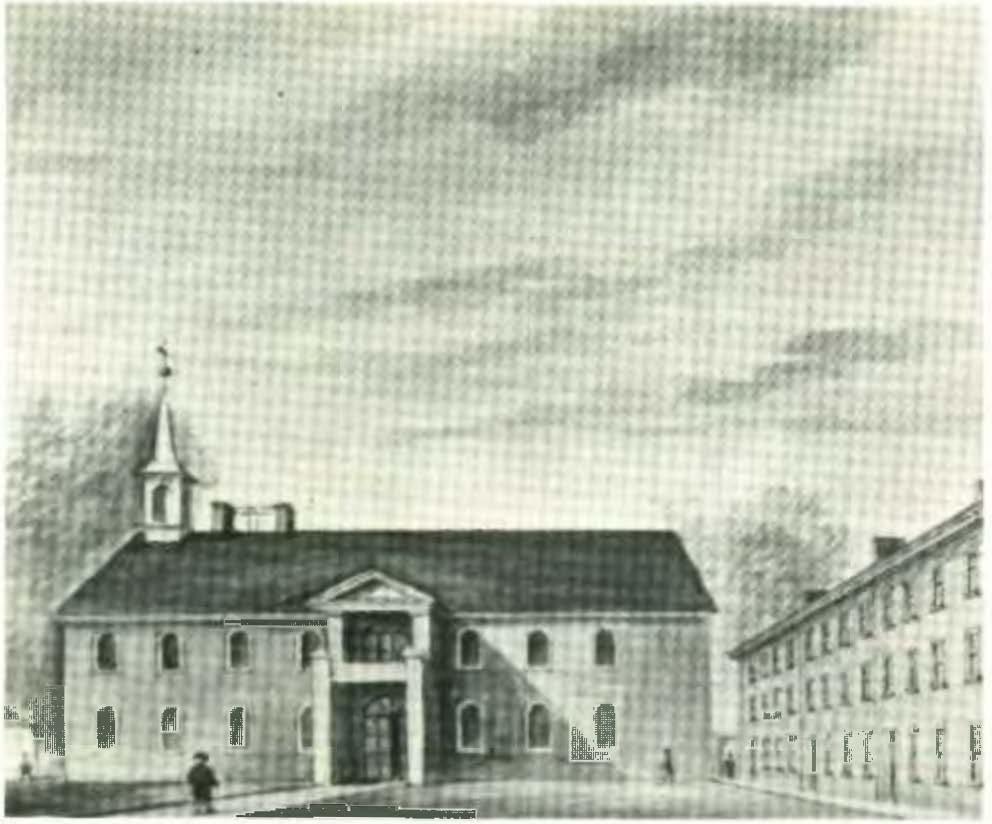
Until the late nineteenth century, the University was a small provincial school with an enrollment of about 1,000 full-time students. During the period from 1880 to 1910 there was astonishing growth, under the auspices of two remarkable provosts. The first was Dr. William Pepper who initiated thirteen new departments during his term (1881-1894). These included the Wharton School (1881), the Graduate School of Arts and Sciences (1882), the Veterinary Department (1884), and the Department of Physical Education (1885). The University Museum and Wistar Institute were created in 1887 and 1892, respectively, followed by the School of Engineering, and the Graduate School of Education in 1893.
Although Provost Pepper was the creator of departments, his successor, Dr. Charles C. Harrison was the builder. Under him thirteen buildings were constructed-the University Museum, the Law Building, the Chemistry Building, Wistar Institute, Franklin Field, the Observatory, Houston Hall, the Laboratory of Anatomy and Physiology, the quadrangle dormitories, and the Dental and Zoological Buildings.
Bellwether 8
Benjamin Franklin
Ticket of admission to lectures, 1790



In the midst of all of this activity, enrollment increased rapidly. By the end of World War I there were about 11,000 students, and by 1938 this figure had reached 16,000.


It was not until 1930, however, that the University had a full-time president. The election of Thomas Sovereign Gates was a fortunate choice since Gates was the noted financier who artfully guided the school through a major depression.



The School of Veterinary Medicine is a part of a long, and proud academic heritage. Here are a few statistics about the University as it is today:
Enrollment: Over 22,000 students.
Alumni: Over 120,000 living alumni.
Total yearly payroll: Over $232 million.

Faculty: Over 1,700 full-time faculty.
Library books: Over 3 million.
Plant replacement value: Over $1.2 billion.
A Nice Place for Fairman Rogers
In 1893 the librarian of the University of Pennsylvania reported that he had received 566 bound copies and 357 unbound pamphlets and periodicals from Mr. Fairman Rogers. This magnificent collection, now known as the Fairman Rogers Collection on the Horse and Equitation, eventually found its way to the School of Veterinary Medicine, and now resides in the Jean Austin duPont Library at New Bolton Center. Dean Robert R.Marshak has pointed out that this beautiful library on the rural campus of the School of Veterinary Medicine is a perfect setting for those who want to browse through or read on the ancient art of horsemanship.It is also apropos that Mrs. Alice Holton should be the librarian and custodian of this world famous collection, which brings us to the connection between Fairman Rogers and gourmet cooking. We do not have any documentation about Mr.Roger's gastronomic tastes,but considering his appetite for many of the other good things in life, it can be concluded that food would be among them. Alice Holton, who has been at New Bolton Center since 1963, is a gourmet cook, who recently developed the art of baking French bread from ingredients found here in the United States. It seems very probable that Fairman Rogers would highly approve of such a person with such tastes being in charge of his collection.

Mr. Fairman Rogers was a man of many talents who undoubtedly enjoyed life to the fullest.He graduated Phi Beta Kappa from the University of Pennsylvania in 1853, and by 1855 was professor of civil engineering. From 1871 to 1876 he was a member of the Board of Trustees of the University.Mr. Rogers served on the special trustees committee which recommended the establishment of a veterinary department in 1884.

Fairman Rogers had a keen interest in many things-engineering,architecture, military service, horticulture,horsemanship, yachting, photography, the fine arts,and veternary medicine.He was one of the original fifty members appointed to the National Academy of Science by the U.S.Senate.He served in the Civil War, and is believed to have contributed substantially to the development of the first typewriter. Mr.Rogers had a great interest in photography, and in this he was joined by his good friend, Thomas Eakins, the famous Philadelphia artist.Rogers was involved in the development of the zootrope which made it possible for Eadweard Muybridge to take photographs of horses in motion. Many authorities consider Muybridge to be the "Father of Motion Pictures. "

While he was an expert in things of a scientific nature,it seems probable that Fairman Rogers' great love was driving. He was the first to introduce four-in-hand driving as a pastime in Philadelphia. In the years just before his death he wrote the Manual of Coaching which is a classic in this field.Mr. Rogers was a
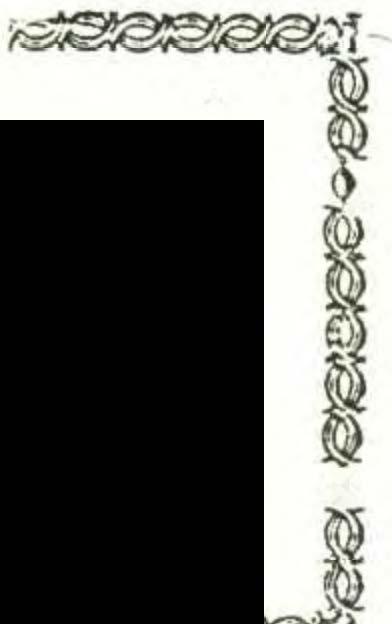

serious student of equitation as evidenced by his collection of books on the subject. Over the years books have been added to the original Fairman Rogers Collection so that it now comprises over 1,000 volumes and periodicals.The collection is international in scope and covers about four centuries of literature on the horse and horsemanship.
In order to make the Collection more accessible to readers, students, and scholars, Dr. Mark Allam, former dean of the School of Veterinary Medicine, commissioned Dr.Clarie Gilbride Fox to prepare a guide to the Collection. This was published in 1975(Medical Documentation Service, College of Physicians, Philadelphia).As well as being a guide, it provides an interesting and informative biography of Fairman Rogers.
We do not need to look far to find some parallels between the interests of Fairman Rogers and those of Alice Holton.Mr.Rogers was an architect; the handsome building which houses the Union League on Broad Street in Philadelphia is mainly his conception. In turn, Alice is interested in old buildings.She and her husband, Herbert,have been involved for twenty-seven years in renovating their prerevolutionary home. Mr.Rogers traveled extensively, and Alice and her husband have traversed Europe many times.Last year they spent five weeks in the Orient.
When Alice Holton came to New Bolton Center in 1963,the library was located in what is now known as the Allam House,and consisted of five books and a few periodicals. Today, the Jean Austin duPont Library,which is located in the Alarik Myrin Memorial Research Building,contains about 5,000 volumes.
History has been kind to the Fairman Rogers Collection. It is housed in a good place, and is under the care of a person who cares and appreciates it.
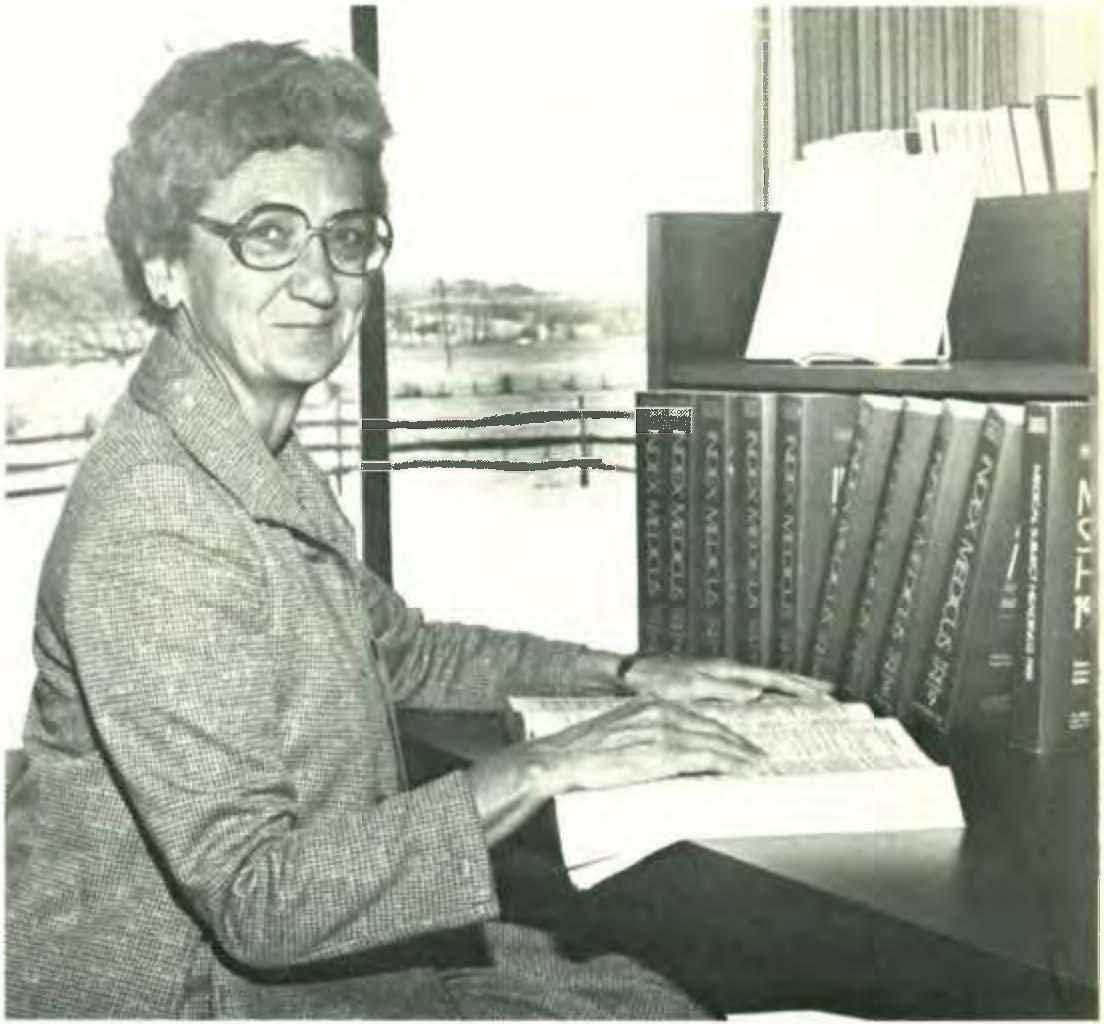
-..... .( nil'ersit_y eal, 1782-1847 .lo.�eph ff'lwrton C'll'ff'ofPbilndclphia, '79D � AC o u R s t ofL E c T u R E s · � On the THEORYand PKAL'TJCEofMEDICINE, B yB E NJ A MIN R US H, 111. D. 0 ForMr. 0�d��
Spring 1982 9
Mrs. Alice Holton
Wildlife Service ...
The Mission
(Continued from cover)
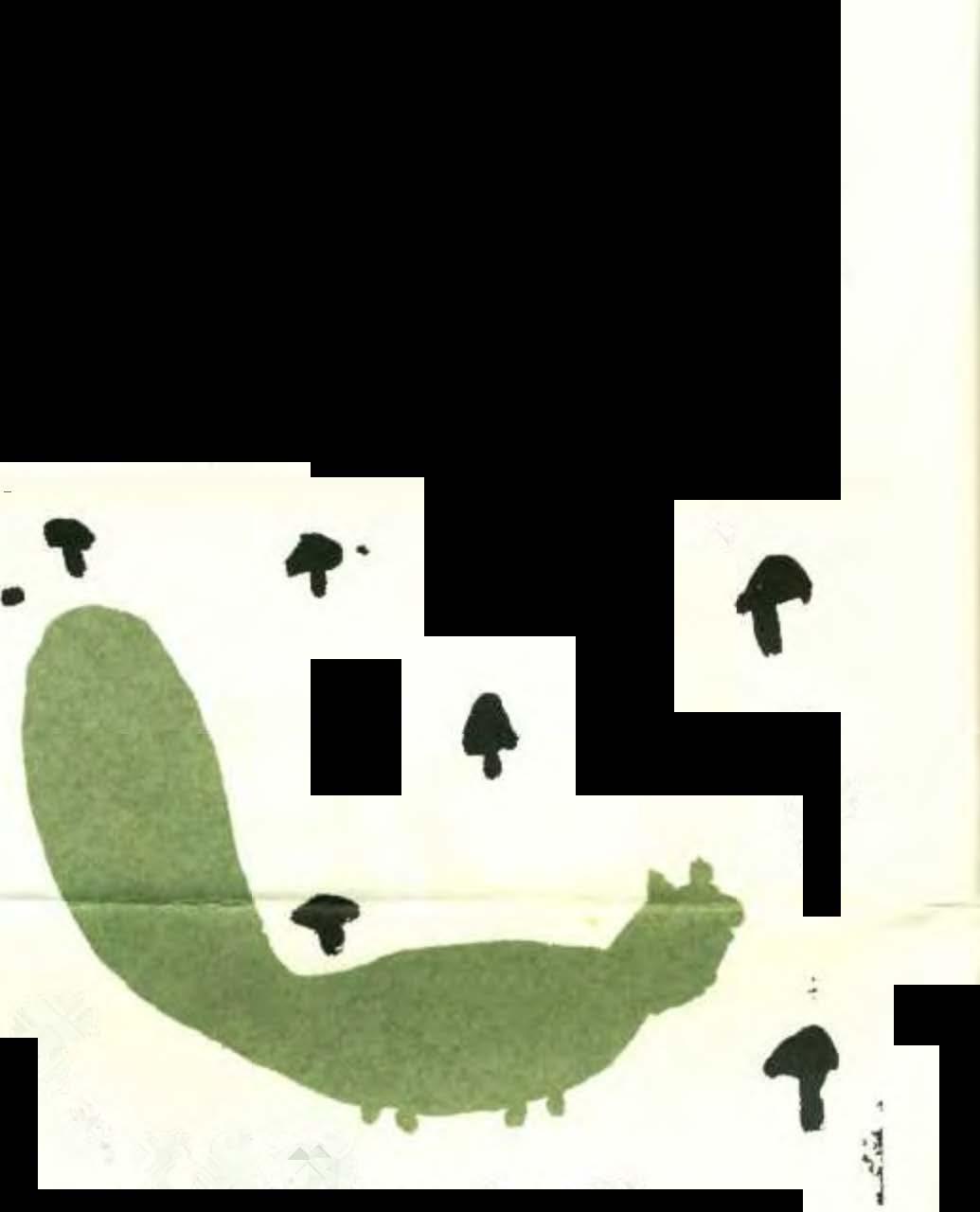

foods and increasingly intolerant of potentially dangerous food additives and of poisons which contaminate and defile the environment, veterinary medicine has come to assume greater responsibility and greater leadership in pre-ventive medicine and public health.
Today, more than half the families in the United States own a pet, millions of citizens derive pleasure from horses and other sporting animals, and we are increasingly aware that, beyond companionship, pet animals may in some fundamental way protect against somatic disease and early death.As a people, we have become more accepting of our animal nature and of the fundamental qualities that unite all animals. Among other things, this has led to a vigorous animal rights movement, one element of which clearly aims to eliminate the use of
animals and humans. We shall continue and amplify our contributions:
• To the health care and protection of food and fiber producing animals, companion and sporting animals, and laboratory animals;

• To the health care, protection, and preservation of zoo animals and wildlife, including aquatic species;
• To the diagnosis, surveillance, and control of diseases transmissible from animals to humans, and to protection against environmental hazards which threaten animal and human health and safety;
e To the health aspects of the production, processing, and marketing of foods of animal origin;
• To veterinary and comparative medical research and the application of research findings to animal and human health needs; and
e To expansion of veterinary medical interests, encompassing virtually every significant aspect of the interactions of animals with human beings and with the environment.
Thus, stated in simplest terms, the mission(s) of the School of Veterinary Medicine is to:


• Train a highly qualified body of general practitioners, appropriate numbers of spe· cialists, and bio-medical scientists equipped to meet society's present and future needs;
e Create new knowledge through fundamental and applied biomedical research, including behavioral with particular emphasis on diseases of domestic animals and on animal homologues of human disease through systematic development of the School as a center for comparative medicine;
• Develop and maintain facilities and systems for the delivery of veterinary medical services on a regional basis, especially sophisticated care not generally provided by veterinarians in private practice;
One day in February more than thirty get-well cards, each handmade by second graders from a suburban Philadelphia school, arrived at the Veterinary Hospital of the University of Pennsylvania for a furry patient which had been admitted earlier that week. The mail was unusual, the presence of the patient, a squirrel, was not.
It was one of the many wild animals cared for by the Wildlife Service, a student-run organization which treats and nurses small unowned, wild animals until they have recovered and are ready to be released into their natural habitats or placed in a rehabilitation center.
The Wildlife Service came into being after an emergency-the oilspill on the Delaware River in 1975 which soiled many birds. At that time, Eileen Hathaway(V'77) organized a
animals in medical research. Thus, the ancient profession of veterinary medicine has responsibility for the delivery of highly sophisticated care to our pet and sporting animal populations and for guiding society through the highly politicized thicket of animal rights vs. scientific need, to a sensible and appropriate value system on how animals may be used.
Despite austere financial circumstances and the realization that veterinary medicine lacks the third party payments and subsidizations taken for granted in other medical cultures, we believe that our school is on the threshold of its most productive era and that we must continue to take broad responsibility for matters relating to the health and welfare of
e Offer quality continuing education programs aimed at refreshing and advancing the knowledge and skills of practicing veterinarians;
e Broaden the contributions of veterinary medicine to society through the development of new disciplines and specialties, for example, aquatic veterinary medicine, veterinary social work, and advanced animal technician training programs.
We take cognizance of the fact that in our complex School, as in our complex larger society, we must satisfy legitimate and essential needs which may at times may be incompatible with one another-either on philosophic or operative grounds. We must find our way, meeting the demands for research, teaching, and patient care, by means of information sharing, throughtfulness, tolerance, and a longrange collegial view.
This statement was prepared by the LongRange Planning Committee of the School of Veterinary Medicine.
group of students to help wash 500 birds, mostly Ruddy ducks. During these efforts, the Penn team found that little was known about proper medical care for birds. Eileen began to organize a wildlife committee, and with the help of the Student Chapter of the American Veterinary Medical Association (SCVMA) she raised funds and solicited supplies from veterinary manufacturers and Philadelphia industry.The school obtained the necessary state and federal permits to house and treat wildlife and the service was born.
Today it is an active organization treating about 180 cases annually. The patients are birds, squirrels, chipmonks, turtles, raccoons, and other small wildlife animals that are found injured or ill along roadsides in the city and surrounding counties. Sometimes the animals are brought in by people who discovered them, as was the case for the squirrel, or at other times by game wardens. Animals not only come from the the Philadelphia area but also from neighboring states, as has a recent patient, a turkey vulture, which was brought from Delaware with a dislocated shoulder.
Bellwether 10
� · ·Sfm•TH! • .. ' ,
', 1".
SQPIKR f.L
Helping,
Caring,



and Learning.
The Wildlife Service does not,however,go out to catch an injured animal.Dr. William Medway,faculty adviser for the group,related the story of a resident of this city's Pennypack Park section who called and asked that someone be sent to capture an injured deer."She had observed the deer from her window and thought it had a wound.She wanted us to catch it and bring it here for treatment.That is one thing we cannot do.Animals have to be brought here. An exception to this rule is when oilspills occur.In these instances members of the service will go to the treatment centers to help wash and treat the oiled birds brought there.The Wildlife Service is part of the Tri-State Bird Rescue and serves as its medical corps.
Wildlife Service headquarters are Ward E, in the old veterinary hospital in a windowless
gram currently has forty members, of which twenty-five are actively involved,six are applying their experiences to an elective course,and the others pitch-in whenever extra help is needed.
Five groups of students,who rotate duty daily,staff the Wildlife Service around the clock.They are led by second- or third-year students who are responsible for taking incoming calls and admitting animals.Injured wildlife is brought to the Emergency Service where it is picked up by the group and then treated in Ward E.Sometimes the service knows in advance of the arrival of an animal,but at other times an animal is just dropped off. This,according to Ms.Niebuhr,makes it difficult to obtain a case history."We call the person who brought the animal and try to find out as much as possible.Most of the time very
bones and by immobilizing the injured limb. The healing process is slow,and progress is monitored through radiographs.During the recovery period students gently exercise the animal's limbs to minimize muscle atrophy. Once the injury is healed,the animal is taken to a rehabilitation center to regain full strength prior to being released.
Participation in the Wildlife Service provides students with an opportunity to garner practical experience."This is the only student group which gets extensive hands-on experience early in veterinary school," Ms.Niebuhr pointed out."We learn to examine animals and deal with people professionally. It is a great preparation for the clinic in the fourth year. The learning experience goes beyond this.Students have bi-weekly rounds where cases are discussed in depth,and they keep detailed patient records where diagnosis, treatments,and changes are noted.They learn to cope with the disappointment of not being able to help when an animal that is too ill to recover must be humanely destroyed.Even then the involvement does not end as the dead animals are further studied to learn as much as possible about the disease or injury. Students do necropsies,tissue studies,and cultures to find out why they couldn't help. The findings are discussed during rounds or at the weekly group meetings. The service also exposes students to many hospital and school resources since they must utilize different specialties to help each patient.They are guided by their adviser,Dr. William Medway,professor of clinical laboratory medicine,who acts as liaison between the Wildlife Service and the school,hospital,and administration.He also helps to find proper rehabilitation centers for recovered animals,and handles many of the in-coming calls regarding the Wildlife Service.
and quiet room.Old animal cages are used to house the sick small wildlife,larger birds are kept in sturdy plywood pens on the floor.Students go about their tasks as silently as possible to minimize stress on the wild animals. Students treat the sick,clean cages,act as physical therapists,and raise food supplies, such as mice,for the raptors which are frequent patients.
The Wildlife Service is part of the student chapter of the American Association of Zoo Veterinarians.Virginia Niebuhr,a second-year student,is chapter president.She is quite interested in wildlife management and preservation and has experience with birds.After her undergraduate work at Penn,she studied at Oxford University,England,and observed herring gulls on an island in the Irish Sea for two years.This summer she,along with four other members of the Wildlife Service,will participate in Aquavet.Virginia joined the wildlife service during her first year at the Veterinary School and explained that the pro-
little information is available and we have to figure out things from the appearance of the animal and the signs it displays." Ms.Niebuhr said that when an animal is first admitted the students try to calm it,then perform a complete physical examination,and,if necessary,blood tests,cultures,and radiographs are performed.She pointed out that these animals have to be handled carefully since they may be disease carriers and often are infested with parasites.Students frequently have to survey literature and consult with the various specialists at the hospital to arrive at a diagnosis and a course of treatment."It takes a lot of initiative and time by the student,but we do receive help from many different specialists here."


One of those frequently consulted is Dr. Charles Newton,associate professor of orthopedics.His services are much in demand because many birds brought here have fractured limbs which are often the result of gunshots or collisions with wires or buildings.Dr. Newton repairs these fractures by pinning the
Dr.Medway explained that funding for the service is very limited."Sometimes donations are received from people who bring animals. There is little money,but we manage. Food, for example,can be a problem.So we make arrangements with a number of supermarkets to obtain the wilted,but edible,vegetables. The raptors,which require animals as food, are fed killed mice which are raised by the students,or killed chicks which are obtained from laboratories at the University.
Ward E is a humble facility,but it is a step up from the time when members of the Wildlife Service had to keep patients in their own apartments.Now plans are being made to move the service to a larger ward in the old hospital building where more cages and three flight cages-fashioned from exercise penswill be available.Both Dr. Medway and Ms. Niebuhr hope that one day soon the Wildlife Service will be expanded to have its own clinician.That is still a dream,as are the flight cages at New Bolton Center for the rehabilitation of birds,and facilities for the rehabilitation of other small wildlife.
For now the Wildlife Service continues its work in Ward E,providing a service to the public and the wild animals in the Delaware Valley,and being a special learning experience for students and faculty members.
Spring 1982 11
I
Statistics: There were 8,805 clinic visits at VHUP during the last six months of 1981, of which 6,924 were dogs and 1,509 were cats. Most of the rest came through the Exotic Animal Clinic. Forty-nine percent of the clients were from Philadelphia, twenty-nine percent from outside of Philadelphia and twenty-two percent from other states.
Common problems presented in the six-month period were: fractures, tumors, hit by car, fleas, intestinal parasites, thyroid conditions, atopic skin diseases, Parvovirus, cystitis, blocked cats, cata-
Bathing. There is only one rule about bathing your dog-do it when necessary. Some dogs keep themselves clean and are never bathed, particularly if they live outside. Frequent brushing often will minimize the amount of bathing required. There are dogs which must be bathed often to keep them socially acceptable (odor-free).
Some show dogs are bathed almost daily as part of their grooming, but usually there is no reason to bathe a dog more than once a month. Always precede the bath with a thorough brushing. Bathing is a part of grooming and the frequency must be determined by the "life style" of the dog and its owner.
artificial insemination is used or when a bitch showing signs of estrus will not accept the dog. However, most normal bitches will accept the male at the optimum time.
If a bitch has normal cycles, normal behaviour, and normal external signs of estrus, yet does not become pregnant, the causes might be an infertile sire, infections, or obstructions in the genital tract. In the case of infections, a culture from the uterus must be taken surgically through an incision in the abdominal wall. Cultures from the vagina will contain bacteria even in healthy bitches. Hormonal problems may be suspected when there are abnormal cycles A low level of thyroid hormone may cause long intervals between heat periods. Replacement therapy may produce puppies but canine hypothyroidism is often hereditary and it is not advisable to breed these bitches.
alOnly bits and pieces of information are given here but I've included answers to many of the frequentlyasked questions. Successful breeding management requires careful observation of each individual, accurate record-keeping, knowledge of reproductive physiology, and pedigree evaluation to eliminate inherited problems.
racts, seizures, epilepsy, glaucoma, pneumonia, and periodontal disease Medical records now are computerized. There are 800 disease classifications, and the species, breed, age, sex, and distribution of each disease can be re-called. It is estimated that about thirty-five percent of the cases seen in VHUP are referred by practicing veterinarians.
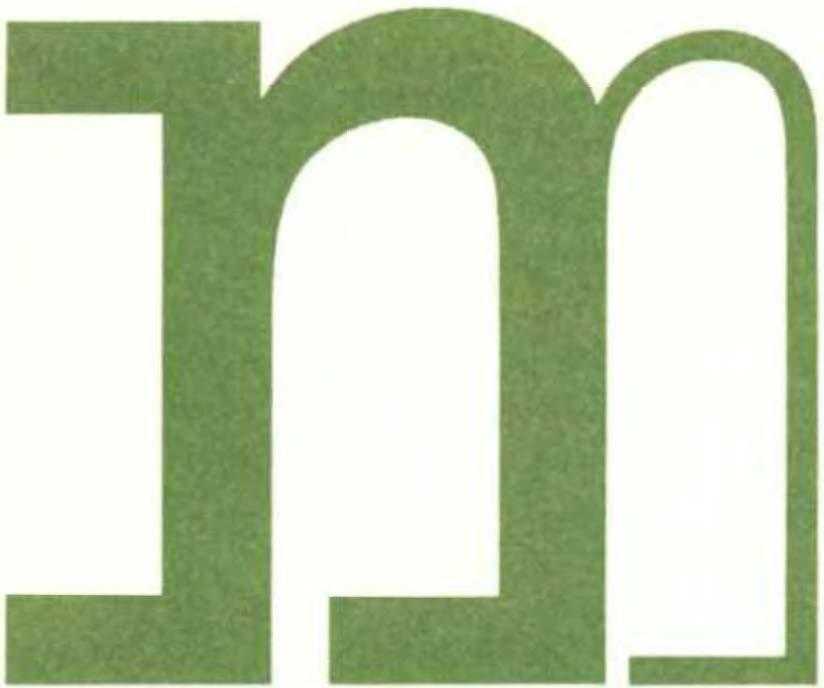

The Well Dog. Every dog owner should take a few minutes each week for a short check-up, because many common problems can be prevented in this way. If grooming is neglected, particularly in a longhaired dog, skin lesions may remain unnoticed until they reach major proportion and require lengthy, often costly, treatment. Be sure the area around the tail is clean. Look into the ears and be sure there is no excessive accumulation of wax and hair. Toenails should be just long enough to touch the ground. Teeth should be clean and the gums pink. The eyes should be clear with no accumulation of matter. If you know how your dog looks and behaves when it is well, you will be able to recognize signs of trouble
Common signs of illness are change in appetite, fever, and dehydration. One meal refused usually is not important but there may be cause for concern if the appetite is completely lost for a day or two and the dog is listless and not as active as usual. If the dog seems its usual self and refuses a meal, perhaps it is getting hand-outs.
The normal body temperature (taken rectally) is higher than in humans-101.-102.5°F Fever is an elevated body temperature. It's important to understand that excitement and exercise may elevate the temperature which should be taken when the animal is quiet.
Dehydration occurs when the body's output of water exceeds its intake, particularly when there is vomiting or diarrhea. If the skin has lost its elasticity, fluid replacement is indicated. Check this by picking up a fold of skin and letting it drop. It should fall back into place immediately.
A yearly routine check-up by your veterinarian is a good way to be sure of your dog's condition. This can detect problems you would not find without special tests, such as fecal examinations for parasites, blood tests for anemia, microfilaria or metabolic diseases, and examination for possible heart problems. When the veterinarian examines the dog, a complete history is important. You should learn to recognize what is normal so that you can better describe any suspected abnormalities.
Crackers
Overpopulation of dogs and cats is a serious problem. The large number of homeless strays points to the importance of responsible ownership and controlled breeding. Spaying or neutering should be considered for all household pets.
Reproductive Failure happens frequently. The bitch in season that is accidentally mated almost always will conceive. However, many carefully planned matings produce no puppies. Infertility in the bitch is difficult to study because the internal organs cannot be examined easily, the normal estrus cycle occurs only about every seven months and frequently accurate records have not been kept.
Every breeder should have knowledge of the estrus cycle based on scientific studies rather than folklore. In the bitch, there are four periods in the cycle Proestrus usually lasts about nine days and the range is from three to seventeen days. During this period there is a bloody vaginal discharge, swelling of the vulva, and the bitch will not accept the male. Estrus is the period when the bitch will stand for the dog and usually shows "flagging" of the tail. It is the stage of the cyle when conception occurs. This stage lasts about nine days but may be as short as three or as long as twenty-one days. Diestrus lasts about two months and anestrus, when reproductive organs are not active, about four-and-a-half months. The bitch's record should show the age of the first "heat" (this may range from four to eighteen months) and the duration of each stage. The average interval between "heats" is seven months, but this may range between five and eight months in the normal bitch.
"False pregnancy" may occur in bitches which are not bred, and is considered normal. Some bitches will make a nest and produce milk-these may be used as foster mothers for orphan puppies.
Although many experienced breeders consider one mating all that is necessary, present recommendations are that the bitch be bred early in the standing heat and every other day thereafter for a total of two or three times.

Microscopic examination of the cells lining the vagina may be used to determine the best time to breed. Vaginal cytology is especially useful when
Teeth. The adult dog has forty-two teeth (adult humans have thirty-two). Newborn puppies have no teeth, but twenty-eight deciduous puppy teeth will appear between one and eight weeks of age Permanent teeth will begin to come in at about four months of age.
Regular examination of the teeth is advisable, beginning at about eight weeks. Sometimes the puppy teeth are not shed and need to be removed. In the normal adult dog, a fingernail scraped over the teeth willpickupnodebris.Soft, whitematerial which can be scraped off (plaque) may lead to serious problems if not removed. Hard dog biscuits, hard rubber toys, or rawhide bones may help the problem. A toothbrush (baby's) or a rough cloth over a finger may be used to clean the teeth once or twice a week. Ordinary toothpaste will do although there is a special product made especially for dogs. Your veterinarian may prescribe an antiseptic solution. If plaque persists, it becomes hardened calculus and must be removed professionally by scraping or ultrasonic cleaning. If neglected, it can lead to periodontal disease with foul breath, loss of teeth, and often systemic disease
ABusyPlace

New Bolton Center continues to be a favorite location for a variety of groups to hold meetings and social affairs.On March 10, 1982 forty young farmers from Lancaster County met to hear presentations by several faculty members and then tour the facilities. On March 12, a Continuing Education Course-"'Current Trends in Bovine Nutrition"-was held under the direction of Dr. James Becht.
Other groups using the facilities were Dr. Donald Abt's Sailing Club, the Penn Marydel Apaloosa Horse Club, the Delaware Valley Combined Training Association, and the Debonair Flyers. On March 27,Drs. Mark Allam and Richard McFeeley hosted the annual carriage drive to the Cheshire Point races, and on April 17 the annual New Bolton Center Open House was held.
• 1
Bellwether 12
e e e e • e e e e e e e e a e e e e e e e e e e e e e • I
AquavetUpdate


In the last issue of Bellwether we featured a story about the Aquavet Program. One of Aquavet's goals is to provide the stimulus for veterinary students to pursue careers in aquatic medicine. This is a report on a student who has followed this course.

Dr. Jean Maguire received her V.M.D. degree from the Uni· versity of Pennsylvania in 1980 after doing undergraduate work at Stanford University.As a part of her veterinary education Dr.Maguire spent the summer of 1978 in the Aquavet Program. Since graduation, she has devoted much of her timeto research in marine biology As a research assistant, Dr. Maguire has participated in two cruisesone to study sharks and the other to investigate whales. Both of these studies were conducted by the Woods Hole Oceanographic Institute, Woods Hole, Massachusetts. During one cruise, sharks were caught and electronic transmitters attached to monitor brain temperatures when they moved into cold waters. The whale research was conducted to determine the population distribution of sperm whales in the Caribbean by use of hydrophones.
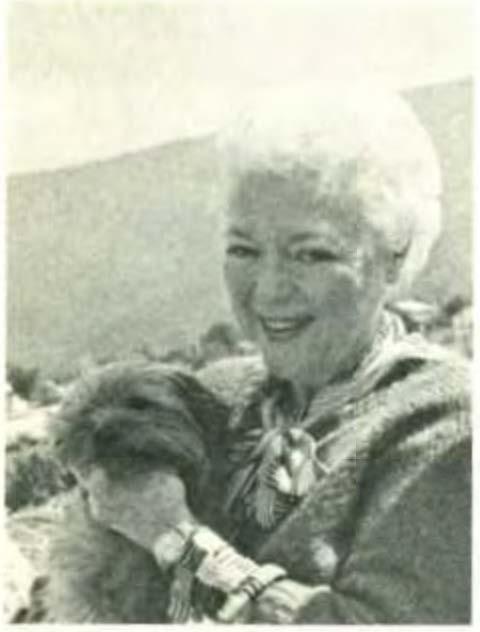
At present Dr. Maguire is working part-time in a small animal practice in Massachusetts while she anxiously awaits new funding that will permit continuation of her studies on marine animals. While "marking time," she lectures at the Sea Education Foundation.
Dr. Maguire was recently the subject of a feature story in the Cape Cod Times.
Bellwether thanks the Cape Cod Times for allowing us to use Craig Little's "Animals of the Sea " as a reference for this article.
NewChairfor DavidKronfeld
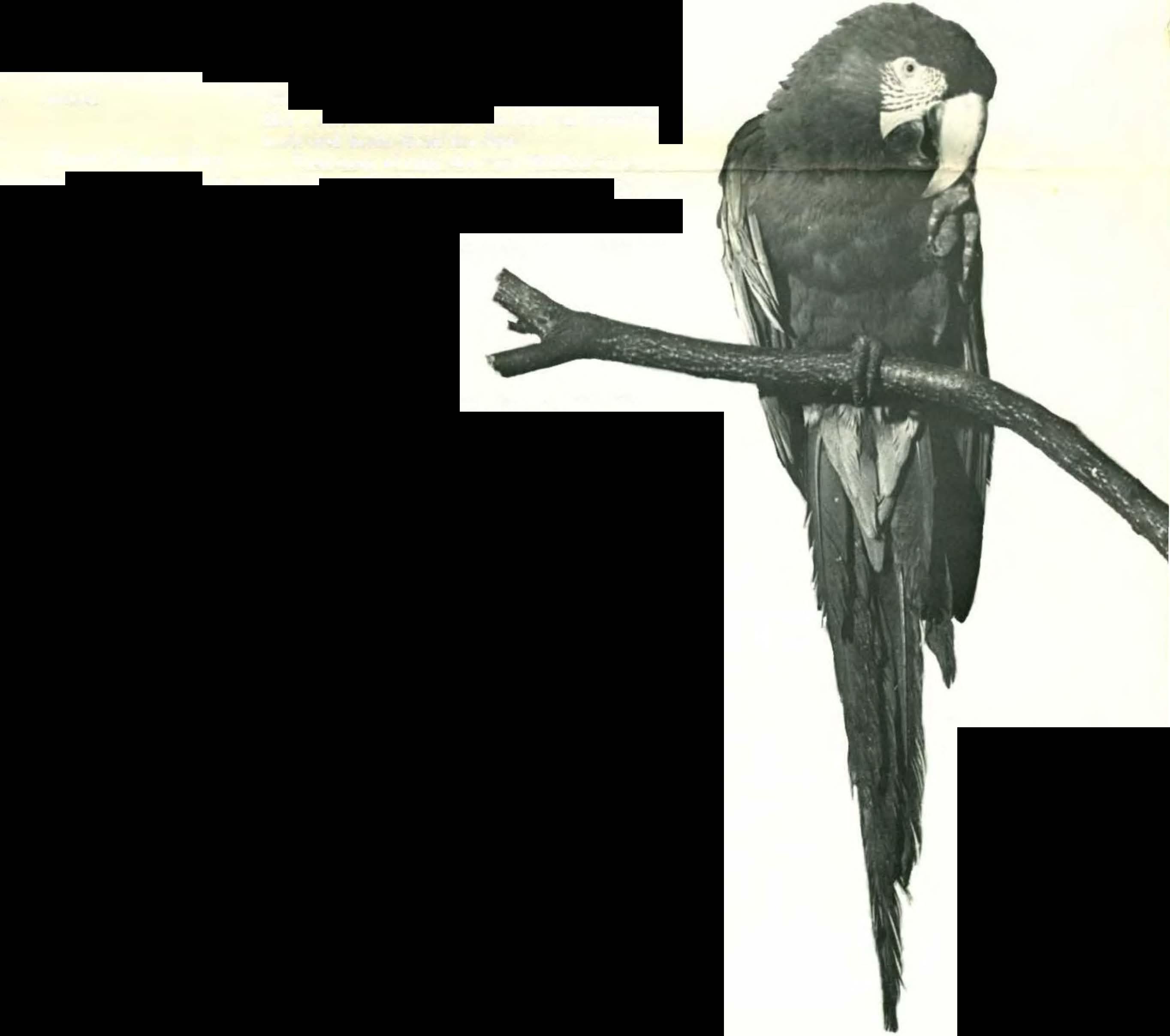
David S. Kronfeld, B.V.Sc., M.V.Sc., Ph.D., Professor of Nutrition,was named to the newly created Elizabeth and William Whitney Clark Chair for Nutrition.It was endowed by Mrs. Elizabeth Clark, Mauretown, VA., a wellknown dog fancier and breeder. Mrs. Clark raises Gordon setters, English cocker spaniels, and miniature schnauzers under the Rockaplenty prefix.
Mrs.Clark is an ACK licensed judge for a number of sporting breeds, hound breeds, and miniature schnauzers. She also finds time to serve on the Ladies Committee for the Veterinary Hospital of the University of Pennsylvania and is a member of the Volunteer Tour Guides for the new hospital.
Maxine the Macaw
Maxine, a Green-Winged Macaw who lives in the Children's Zoo section of the Philadelphia Zoo,spends more time on the road than do most humans. Almost every morning Maxine travels to various schools and organizations as part of the Zoo's Education Program.Bob Callahan, Superintendent of the Children's Zoo, and other Zoo staff members accompany her, of course.
Maxine is particularly suited to this type of public relations traveling because she possesses typical characteristics of her orderPsittaciformes. She is attractive, intelligent, even-tempered,easy to care for, and best of all, she talks.
By mimicking those around her and being conditioned to to respond to food cues, Maxine can bark like a dog, quack like a duck,laugh hysterically, and enunciate approximately twenty-five words,including hello,cracker, Hi Rocky, Hi Max, Ralph, Eric,Bob,rat, shut-up, get out of here, and a few unprintables.Fortunately for Mr Callahan,Maxine has not yet embarrassed him during a demonstration since she is trained to respond to a specific food cue with a specific word. The only time she sounds like a sailor is when she's in the van traveling back and forth from the Zoo.
The story of why she says "Hi Rocky" is intriguing. During a segment of the movie Rocky II, Sylvester Stallone proposed to Talia Shire in front of the Lion House at the Zoo. Stallone invited Maxine, along with a boa constrictor, to eat lunch with him and the film crew. In honor of meeting this movie star, Maxine was taught to say "Hi Rocky," and did so, to the amusement of all present.
Donated to the Zoo in 1975 by the TerryLou Zoo in Scotch Plains,New Jersey, Maxine is about twenty-three years old and could live to be sixty She eats a normal parrot diet, which consists of parrot seed (mixture of peanuts, sunflower seeds, and other small seeds), orange and apple slices, and a small quantity of meat three times a week.
Acquired as a male, Maxine was recently revealed to he female. It is impossible to determine the sex of a macaw without an internal examination, called venting, and since she was not to be used for breeding purposes, no one ever bothered to make sure that Max was really Max. One day, however, when Mr. Callahan opened Max's cage,he found her sitting on an egg, and renamed her Maxine.
Even-tempered and easy to care for, Maxine exemplifies the type of animal that is wellsuited to he a pet, especially for incapacitated people who must remain indoors. Macaws are therapeutic for such people, but the cost to own one may he prohibitive. Young macaws
cost about $750, and older macaws with a vocabulary can cost up to $2000.
Maxine may not be the best choice for an incapacitated female, however. Mr. Callahan has found that Maxine is sexually biased; she definitely prefers males. Maxine has rarely shown aggressive behavior towards males, hut once latched onto a female trainer's nose and actually swung, almost crushing the woman's nose. Because of this idiosyncrasy, Mr. Callahan usually prefers to handle Maxine. When he is holding her, she can he safely stroked because she tends to pay more attention to Mr. Callahan than the strokers.
When Maxine is not on the road with the Education Program,she's at the Children's Zoo, where she usually draws a large audience of admirers.As spring arrives and more children visit the Zoo, Maxine is sure to be the center of attention.
• • • • • • • • • • • • • • • • • • • • • • • • • • • • •
Spring 1982
13
Mrs. Elizabeth Clark
Photo courtesy of the Philadelpia Zoo.
Rosettes & Ribbons @;r
Dr. David Kronfeld, profes- Mrs. Helma Weeks, a Bell- The German-speaking
Dr. Robert J. Eckroade, Hats off to Mrs. Doris sor of nutrition, was the wether writer, was Group of the World Small associate professor of Boucher. wife of Dr. Wil-
Abbott Lecturer of the recently honored by the Animal Veterinary Medi- poultry pathology and liam Boucher, emeritus Nutrition Society of Aus- Dog Writers Association cal Association (WSAVA) head of the poultry diag- professor of medicine
tralia on November 25, of America for her bi- has established an nostic laboratory, New Each Thursday Doris 1981 in Sydney, Austra- weekly column in the annual prize in the name Bolton Center, has been offers home-baked goods
lia. The topic of Dr. Kron- Daily lnteligencer, a of Dr. David K. Detweiler, appointed adjunct asso- and other delicious items feld's lecture was "Keto- Bucks County news- professor of physiology ciate professor of veteri- for sale at New Bolton sis and the Efficiency of paper. Mrs. Weeks's and director of the com- nary science at Pennsyl- Center; proceeds go to Lactation," in which he award was for the best parative cardiovascular vania State University. the student scholarship explained how a meta- column on dogs appear- studies unit. It will be fund. A great idea by a bolic disorder (ketosis) ing in a newspaper in known as the O.K. Del-
Dr. Stephen Hitchner (V'43) grand person! has led to new lactation the United States The weller Prize, and the first was honored upon his concepts Dr. Kronfeld, Daily lntelligencer was award will be made in retirement in February Dr. Chung Wha Lee Iyengar, with his colleague, Dr. named as Newspaper of Frankfurt, Germany in 198 1 from the New York a research associate, William Chalupa, the Year for its contribu- October 1982 by Dr. Det- State Veterinary College was recently honored by recently received a three- tions in promoting the weiler. The prize, which at Cornell University. the Philadelphia Comyear grant from the Unit- care of dogs. The carries a stipend of 1,000
From 1966 to 1976, Dr. mission on Human Relaed States-Israel Bina- awards, made possible DM, will recognize "out- Hitchner served as pro- tions for her work as tional Agricultural and through the Gaines Dog standing scientific work fessor and chairman of founder and first presiResearch Development Research Center, were in the field of cardiovas- avian diseases. After dent of a group that Fund to continue studies presented on February 7, cular research, espe- relinquishing the chair- helps protect the civil on relationships between 1982 in New York City. cially as applied to small manship of the depart- rights of Korean women lactational efficiency and animals." Dr. Detweiler is ment in 1976, Dr. married to native Amerimetabolic disorders in Dr. Charles Reid, former a world authority on Hitchner initiated a pro- cans and aids their cuidairy cows. acting chairman, of Clin- comparative cardiology. gram for research and tural adjustment. Dr. ical Studies, New Bolton teaching in the field of Iyengar, the daughter of Dr. Robert J. Rutman. pro- Center is now chairman. The School of Veterinary pet-bird medicine, with a a celebrated Korean fessor of biochemistry, Medicine has received a special interest in viral novelist. also engages in was recently reap- Dr. William Donawick was
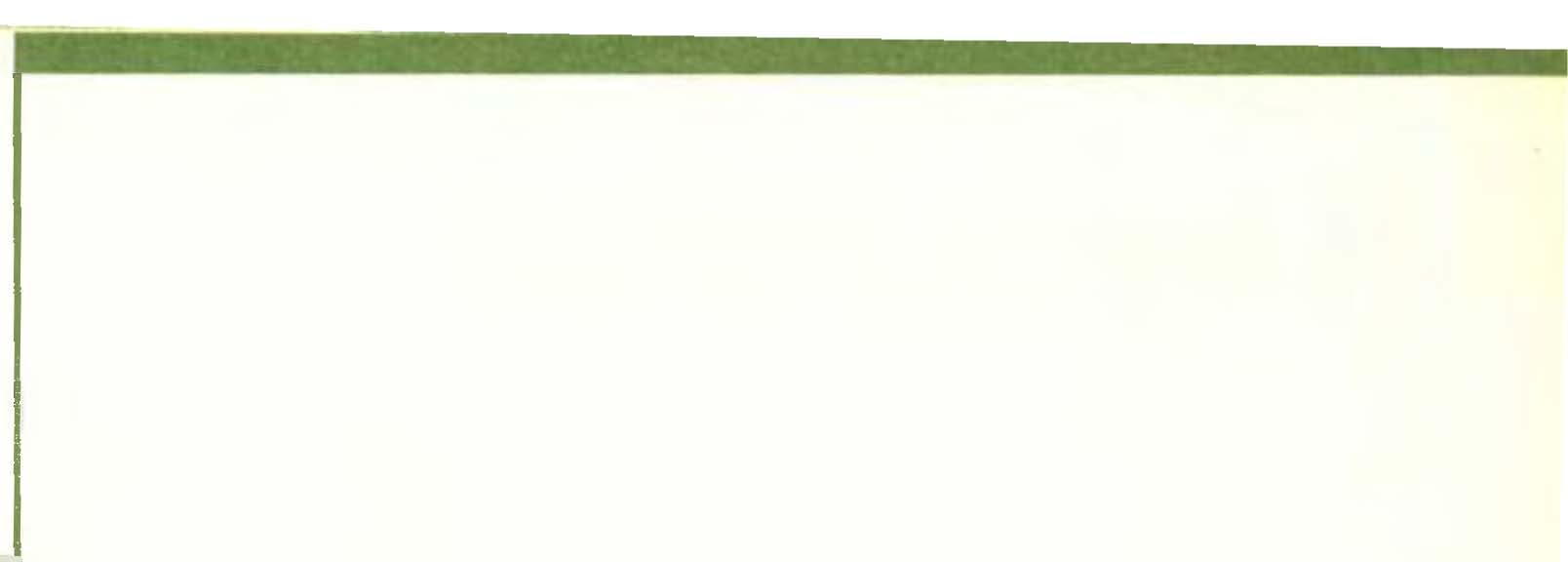
$300,000 grant from the diseases and the devel- educational efforts onpointed, by Provost installed as President of Robert J. Kleberg Jr. and opment of vaccines for behalf of KoreanThomas Ehrlich, as the the American College of Helen C. Kleberg Founda- their control. Dr. Hitchner American children. liaison for and co- Veterinary Surgeons dur- tion to continue research is one of the most chairman of the Agree- ing the College's annual on bovine leukemia, This respected avian patholo- Dr. Gerhard Schad. profesment Committee for the meeting in San Diego in work is directed by Dr. gists in the country and sor of parasitology, parUniversity of lbadan/ February 1982. Dr. J.F. Ferrer whose most is particularly noted for ticipated in the Dahlem University of Pennsyl- Donawick is the Mark recent publication many years of work in Workshop on the Populavania Exchange Agree- Whittier and Lila Gris- appeared in Science, 215, developing and improv- tion Biology of Infectious ment. In accepting this wold Allam Professor of 405-407, 1982. In the ing vaccines for poultry Disease Agents in Berlin, appointment, Dr. Rutman Surgery. report Dr. Ferrer des- respiratory diseases. On Germany, March 14-19, said that to his know!- cribed the discovery of a his retirement, the Cor- 1982. His role was that edge, this is the "most Dr. Robert Eckroade, asso- soluble factor which nell Veterinary Medical of discussant on a panel comprehensive agree- ciate professor of poultry blocks expression of the Alumni Society honored concerned with the ment with an African pathology, has been bovine leukemia virus Dr. Hitchner by present- transmission of infecuniversity in existance elected secretary- genome. In accepting the ing a photoportrait of tious agents. An alumand is the only one treasurer and business grant, Dean Robert R. him to the veterinary nus of the veterinary forged with meticulous manager of the American Marshak stated that "it college. school also participated concern for equalitarian Association of Avian will allow Dr. Ferrer and in the workshop. Dr. Paul principals, rather than on Pathologists. his colleagues to accel- In the winter of 1981, an Fine (V'70), who is presthe basis of aid and ser- erate and amplify their exhibition-"Giorious ently at the London vice motifs." Dr. Leon Weiss, professor contributions to studies Horsemen: Equestrian School of Hygiene and of cell biology and chair- on fundamental aspects Art in Europe, 1500- Tropical Medicine, partieDr. John McGrath, profes- man of the department of leukemogenesis and 1800"-was held at the ipated in the Section on sor of veterinary pathol- of animal biology, was on the possible public Museum of Fine Arts, Control of Infectious ogy, has been appointed the fifth non-veterinarian health significance of the Springfield, Massachu- Agents. graduate group chairman to receive honorary bovine leukemia virus." setts. The purpose was for pathology at the Uni- membership in the Penn- to examine official Dr. Robert Altman, adjunct versity of Pennsylvania. sylvania Veterinary Med- Dr. Robert Whitlock. asso- equestrian art in contin- professor of zoological ical Association's ninety- ciate professor of medi- ental Europe from the fit- medicine, was named nine-year history. The cine and chief of medical teenth century through American Animal Assohonorary membership services, New Bolton the reign of Louis XV. ciation Region I Practicertificate was presented Center, has been named Two books- The Anat- tioner of the year. Dr. to Dr. Weiss at the asso- president-elect of the omy of the Horse (A. Altman practices in ciation's annual meeting American College of Snape, 1683), and The Franklin Square, NY, and in October 1981. Honor- Veterinary Internal Medi- Anatomy of the Horse is a specialist on birds. ary membership is cine. At the same time, (George Stubbs, 1766)accorded to individuals Dr. R.L. Pyle (V'65) was from the famous Fairman who are not veterinar- elected secretary- Rogers Collection on Eques-
ians but who have made treasurer of the College. trianism, which resides in significant contributions the Jean Austin duPont to the veterinary Library at New Bolton profession. Center, were on loan to


the museum.

� /(\
�� ur '
\/ J \)-..../
v l- 'v
Jfiiii11UII•-.-...-. -.,,::::�:�:��.:;.:;-�:::.::::i::
RP.lluwther 14
Resources

Veteri nary Hospital of the University of Pen nsylvania
Arrangements can now be made to tour the new facility of the Veterinary Hospital of the University of Pennsylvania. Touring groups are scheduled every Wednesday, 1:30 p.m., and are limited to ten participants. Groups will be guided by members of the Volunteer Tour Guides. Tours are available by appointment only. Reservations can be made by calling M. Josephine Deubler, V.M.D. at (215} 243-8862.
A Dental Clinic has been added to the services of the Small Animal Hospital. Appointments are scheduled for Mondays and can be made by calling (215) 243-4680
The appointment schedule for the Orthopedics Clinic has been changed to Wednesdays and Fridays. On Mondays the clinic is available for emergency cases only.
VIrus Diagnostic Laboratory: A service for diagnosing viral agents associated with diseases of felines and canines is now being established at the Small Animal Hospital. The service will be able to detect infections infelines withcalicivirus(upperrespiratorydisease), corona virus (feline infectious peritonitis), herpes virus (rhinotracheitis), and parvovirus (panleucopenia} Canine infections will include those with adenovirus 1 (infectious hepatitis), adenovirus 2 (laryngotracheitis}, corona virus (diarrheal disease}, distemper virus, parainfluenza virus (kennel cough), and herpes virus. A service for detecting canine parvovirus disease has been underway for some time in Dr. Peter Felsburg's laboratory. A brochure describing directions for collection and submission of specimens, fee schedule, etc. will be distributed shortly. For more information, contact Dr. Lawrence Glickman (215} 243-3161, Dr. Florence Lief (215) 243-3365, or Dr. Peter Felsburg (215) 243-886 1.
Epilepsy Registry: Dr George Farnbach, assistant professor of neurology, has developed an epilepsy registry for dogs to formulate an information bank on this condition and to devise more effective doseschedules for managing seizures with anticonvulsant drugs. Veterinarians may enroll for this service at a minimal cost for which they will receive determinations of serum levels of anti-convulsant drugs at a greatly reduced rate. At present, serum levels can be determined for Phenobarbital, Dilantin, Primidone, Ethosuximide, and Carbamazepine For information call (215} 243-6858.
New Bolton Center's new phone number for surgery: (215} 444-3595.

On July 26, 1982, the exchange number for all University telephones will change from 243 to 898. All extension numbers will remain the same.
May 17
Graduation Day
19
Laboratory Aspects of Food Animal Practice. Ramada Inn, York, PA
15
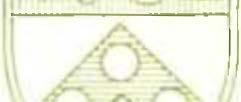



Alumni Day
16

Endangered Species Week begins at the Philadelphia Zoo-Call 243-1100, ext. 223 for daily events information.
19-20
Mid-Atlantic States Meeting York, PA
21
"Last Chance on Earth," a lecture by ABC's Roger Caras, at the University Museum, 7 p.m. Call 2431100, ext. 223 for ticket information.
JUNE
JULY
14-15
Pennsylvania Farmers Association Meeting New Bolton Center
The Loyal
Red and Bl e
The receptions held at various professional meetings throughout the country continue to be popular with our alumni and friends On February 15 and April 25, 1982 receptions were held in Las Vegas, Nevada in conjunction with the Western States Conference and the American Animal Hospital Association meetings respectively. On March 16 we were at the New Jersey Veterinary Medical Association meeting in Atlantic City. It is gratifying to see so many alumni at these affairs which provide a valuable link between the school and those who cannot return for frequent visits.
This year's Alumni Day will be held in the Veterinary Hospital of the University of Pennsylvania (V HUP}. We look forward to a large turnout on May
15, 1982. The meeting wil begin at 10:30 a.m., followed by lunch, r�gtime music, and beer Alumni will be able to tour the new hospital from 1:00 p.m. to 3:00 p.m. In the evening there will be a dinner-dance in the parking pavilion for all alumni, including reunion classes. Reunion classes will have reserved tables so that they may sit together. Friends and family are cordially invited.
The Executive Committee of the Veterinary Medical Alumni Society met at New Bolton Center on March 18, 1982. Minutes of this meeting will be reported on Alumni Day.
Spring 1982 15
Have a Sal& Happy

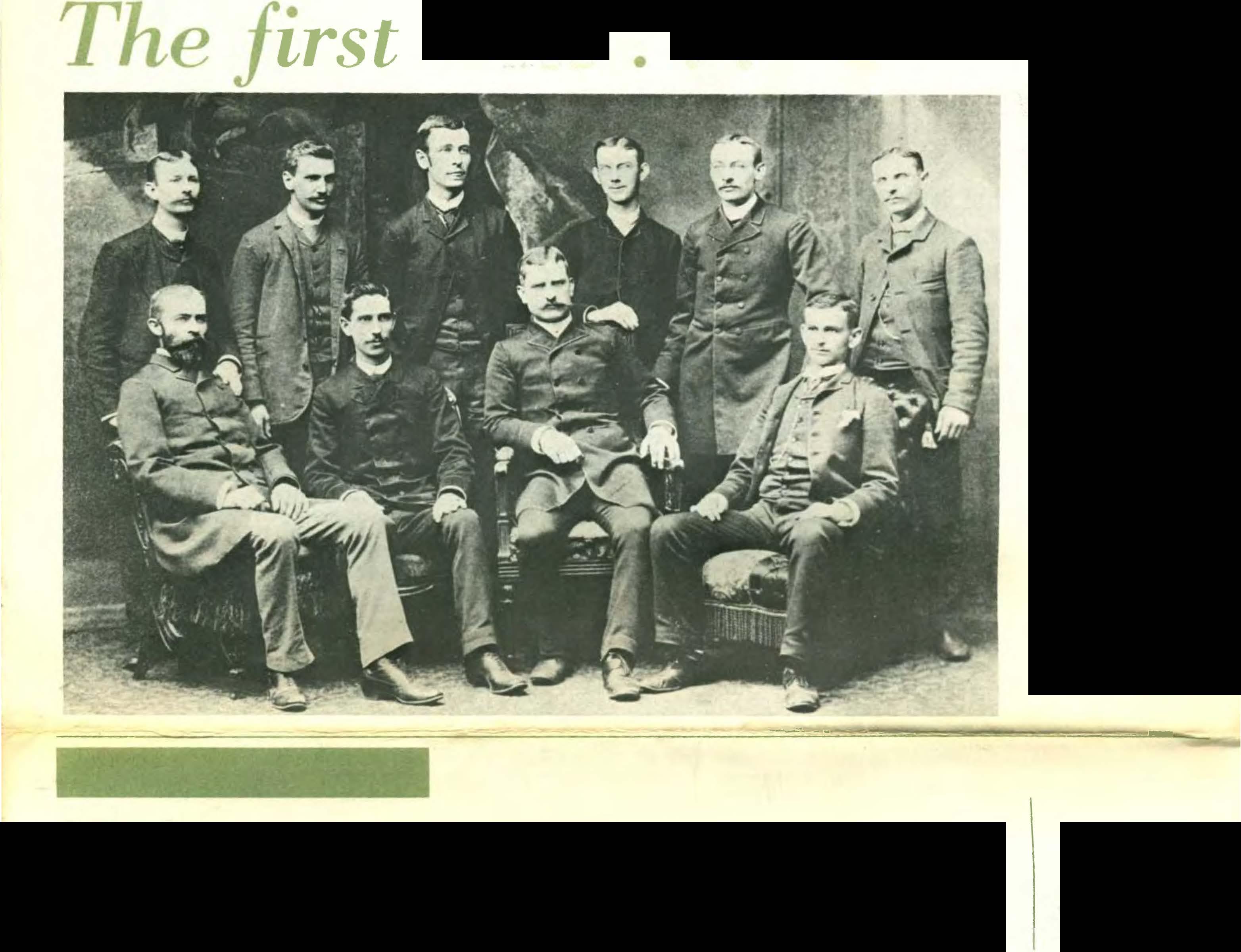

Bellwether University of Pennsylvania School of Veterinary Medicine 3800 Spruce Street Philadelphia, PA 19104 Addresscorrectionrequested
Helma Weeks 133 Chase Avenue Ivyland, PA 18974 • • The
the School of Veterirwry Medicine of the University of Pennsylvania, 1887 Non-Profit Organization US Postage PAID Philadelphia, PA Permit No 2147
irst class
Ms.
first class graduated from

































































